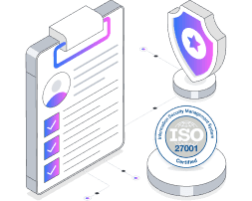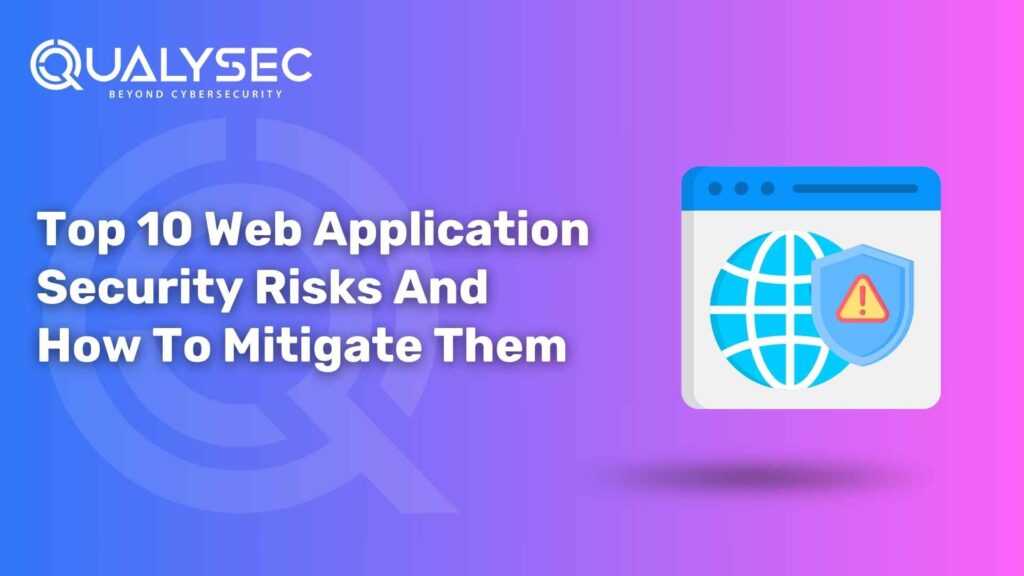Top 10 Web Application Security Risks And How To Mitigate Them
With the growing scale of cybersecurity threats day by day, digitally installed applications present on open platforms are more vulnerable to risk. To reduce these web application security risks, we will learn specific methods and practices in this blog. 10 Web Application Security Risks This article discusses 10 common risk factors to web application security. 1. SQL injection An attack involving SQL injection happens when an intruder enters illicit code into an application’s databases via user-provided sections. These sorts of attacks might achieve a variety of objectives. Enabling an attacker to gain entry to private information kept in the database without authorization is one of the two most frequent results. Login credentials, banking details, and other personal information may be accessible to the attacker, depending on the type of information stored in the database of records. The following result might involve data alteration or erasure. For example, an individual could run the DROP TABLE or DROP DATABASE commands. Ways to mitigate: There are suggested methods for managing user data in the majority of languages and platforms. By combining both front- and back-end protocols to avoid SQL injection, the application itself may improve its protection against this sort of risk. Read our recent guide on Web Application Security Testing. 2. Cross-site scripting (XSS) Cross-site scripting (XSS) attacks include introducing harmful code or scripts into an internet page. The internet page then runs the code, enabling an intruder to obtain private user information such as session credentials and cookies, as well as do additional operations. There are merely two forms of XSS attacks: reflective and stored. In reflective XSS attacks, attackers inject unwanted scripts into a website, which the site immediately executes. In stored XSS attacks, attackers inject malicious code that the website stores and later executes when triggered. If effective, a cross-site scripting attack can steal client IDs, damage websites, and lead visitors to hostile websites, allowing for scams. Ways to mitigate: 3. Cross-site request forgery (CSRF) In a cross-site request forgery (CSRF) attack, an attacker tricks the target into performing an action on a website without their knowledge. The attacker often inserts a malicious link or page into a site the target is currently browsing. When the target clicks the link or submits a form, the action executes on the attacker’s behalf, potentially causing data loss or unauthorized access. Ways to mitigate: Also Explore: Web Application Penetration Testing: A Comprehensive Guide in 2025 Want to check your web app’s security? Download our Pentest Report to find out what needs fixing! Latest Penetration Testing Report Download 4. Insecure direct object references Insecure Direct Object References (IDOR) arise when a program discloses immediate object citations, like URLs or database links, allowing hackers to access sensitive information by modifying these identifiers. Ways to mitigate: Implement proper session management and access controls to ensure only authorized users can access specific assets or information. In helping prohibit criminals from changing object-specific connections to access-restricted information, verify that input from users is of the appropriate category, width, and structure. Rather, look into using globally unique identifiers (GUIDs) to avoid intruders from assuming the specific object addresses required for entering encrypted information. 5. Remote Code Execution Remote Code Execution vulnerabilities enable criminals to run arbitrary programs on a processor, probably resulting in complete system compromise and unwanted use of private data.These attacks may take an array of forms, including leveraging weaknesses within software libraries or inserting spyware into user-defined areas. A competent RCE operation could have produced several outcomes. These involve Denial of Service assaults, the disclosure of confidential data, illegal mining of cryptocurrency, and the installation of a virus. In some instances, an effective operation could enable a hacker to have full authority over the affected system. Ways to mitigate: Clean up user involvement. RCE hackers might exploit storage problems like buffer spills. Running frequent vulnerability assessments on applications may assist you in uncovering buffer overflows and memory-related flaws that a hacker might abuse. Constantly maintain your computer’s OS and third-party programs up-to-date to guarantee you get the most recent safety updates. Minimize a hacker’s capacity to travel via a system by using network splitting, authorization, and a lack of confidence safety measure. 6. Insufficient logging and monitoring Insufficient logging and monitoring refer to the absence of appropriate tracking and surveillance mechanisms established for identifying and reacting to safety concerns. This allows intruders to go undetected and keep trying to breach the network, which might result in information and monetary damage. It’s also crucial to understand what is being recorded. If highly confidential data, including card numbers or login details, is uploaded to logs, intruders who acquire access to the logs may exploit such data unlawfully. Illegal Activities, credit card transactions, or illegal access to a system might be readily accomplished. Ways to mitigate: Log critical actions and events in the application and examine logs frequently. Use log evaluation techniques to automate log inspection management, enabling faster and more effective identification of potential threats or abnormalities. Configure monitoring devices to warn management of any possible security vulnerabilities in immediate detail, permitting employees to jump in faster to imminent attacks. Make sure sensitive data is not simply contained in access or is correctly disguised. 7. Insecure cryptographic storage Insecure cryptographic storage occurs when systems mismanage key cryptography, such as storing keys in a simple form or using weak keys. Vulnerability can provide hackers with entry to private data by compromising encrypted keys. Ways to mitigate: To safeguard saved information, employ powerful cryptographic methods. To support breaking the ability to protect data, use secure key management techniques, including changing passwords often and keeping them in a safe place. Secured solutions for storage, which include security modules for hardware or protected devices for storage, can assist with safeguarding data that is encrypted. 8. Failure to restrict URL access Failure to restrict URL access indicates an absence of adequate access oversight, allowing unauthorized individuals to gain entry to restricted pages and services. This can provide hackers with entry to




